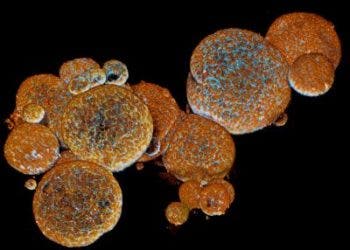
Snake bites may not strike you as being a major public health problem in the 21st century, and may be the last thing on your mind in a pandemic year. But every month, about 11,000 die from venomous snakebites, or about as many deaths as the whole of the 2014-2016 West Africa Ebola crisis.
Most often, victims die because they fail to receive the treatment they need in time, if at all. That’s because antivenom is scarce, expensive, and requires special storage conditions, which makes it prohibitive for developing countries — incidentally, also where most venomous snakebites occur. In rich countries like those in Europe, Australia, and North America, snakebites kill only a handful of people each year although they are exposed to their fair share of venomous species.
What’s more, due to the fact that the composition of snake venom is usually distinct on a species-by-species basis, antibody-based antivenoms tend to be ineffective against bites from different snake species. This means that a cobra bite will need a different antivenom to neutralize it than the ones used for mambas, kraits, and vipers.
But what if we had a universal antivenom? What’s more, what if we could make this antivenom in the laboratory without having to harvest venom from vipers and then going through many other laborious and expensive steps?
Making a cheap, easy to use antivenom that could save tens of thousands of lives each year is an important goal for Nicholas Casewell, the Head of Centre for Snakebite Research & Interventions at the Liverpool School of Tropical Medicine in the UK.
In a new study published today in the journal Nature Communications, Casewell and colleagues showed how a combination of two drugs (marimastat and varespladib) provides broad protection against the lethal effects of five venoms in experiments on mice. Each drug had been previously shown to be safe in human clinical trials for other conditions.
The mice were given a single dose of a combination of the two toxin inhibitors 15 minutes after they were injected with lethal doses of viper venom. The therapy was found to protect the rodents from a wide variety of venoms sourced from vipers from Africa, South Asia, and Central America, hinting at the drugs’ potential universal use. Finding the winning combination, however, proved challenging — but highly satisfying in the end.
“We used in vitro assays to investigate toxin inhibition in the lab, before combining our most effective molecules (each targeting distinct toxins) and seeing if they protect mice from the effects of envenoming. The dual combination therapy reported in this paper surpassed our expectations – despite really large variation in the toxins found in the different snake venoms, the dual therapy provided protection against all of the venoms tested,” Casewell told ZME Science.
Despite the promising findings, Casewell is just cautiously optimistic. It’s just too early to say that these drugs could someday make traditional antivenom obsolete, but the results definitely warrant pursuing further development.
“These drugs are more stable than antivenom, and may not have to rely on the cold chain (i.e. refrigeration), they should be cheaper to manufacture, and thus could be more affordable to tropical snakebite victims, and finally, they could be optimised to be delivered as an oral tablet/capsule – this last point is particularly promising, as currently antivenoms have to be delivered in a clinical environment due to the risk of dangerous adverse reactions and the requirement for them to be administered intravenously,” Casewell said.
Having oral antivenom tablets at one’s disposal could mean the difference between life and death, especially when trekking through remote regions of the tropics, where the nearest hospital stocked with the life-saving serum may be hours or even days away.
“Long term, we envisage this drug combination being able to be given orally soon after a snakebite to dramatically reduce the initial devastating effects of a snakebite, even if the patient does still need to go to hospital/clinic thereafter for observation or additional treatment,” Casewell said.
Ultimately, the efficacy of such a treatment will be determined by clinical trials, which could be years away. There is still lots of work ahead before this therapy may reach those most vulnerable to tropical snakebites. Until then, the researchers are interested in studying the effects of these toxin inhibitors from every angle possible, including their potential to avert non-fatal snakebite local effects. Venomous snakebite survivors often still suffer from swelling, bleeding, blistering, and tissue necrosis that may result in lifelong loss of limb function or even amputation.
“We next want to explore whether this novel therapy can prevent these venom effects, which are currently poorly treated by antivenom. We also need to optimise our dosing regimen of the drug combination to better understand how effective it is when delivered orally, and how frequently a patient might need to be dosed,” Caswell said.
“Finally, it is worth noting that this drug combination is designed to combat the hemotoxic effects of snakebite (mostly caused by vipers), and in the future we aim to try and identify new therapeutic molecules than could be useful for tackling the neurotoxic effects of envenoming caused by distinct snake species (mostly elapid snakes),” he concluded.





